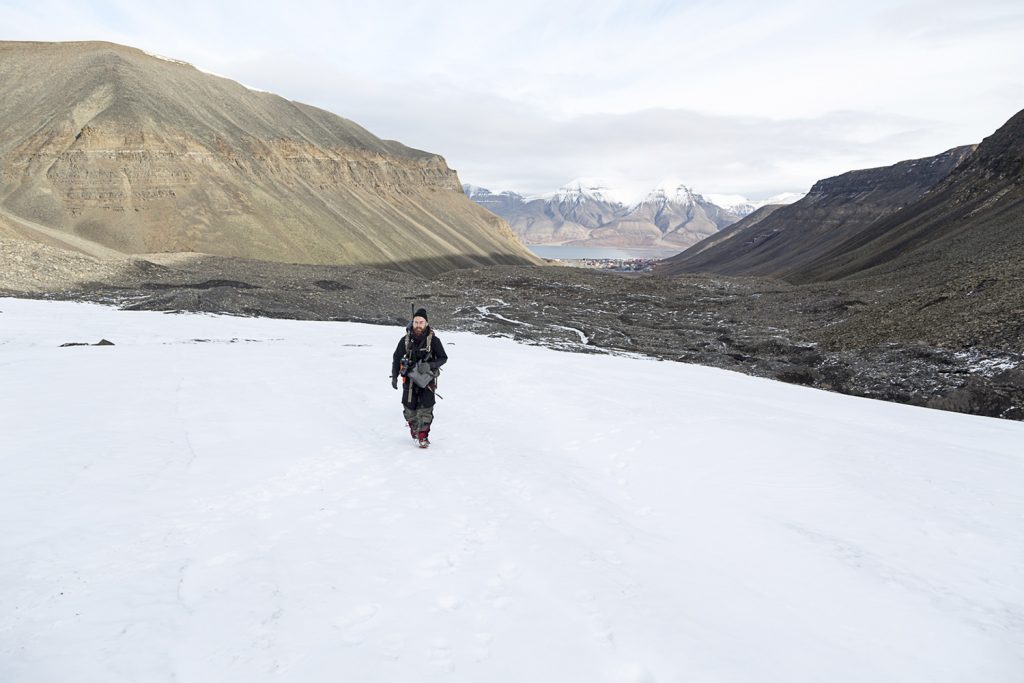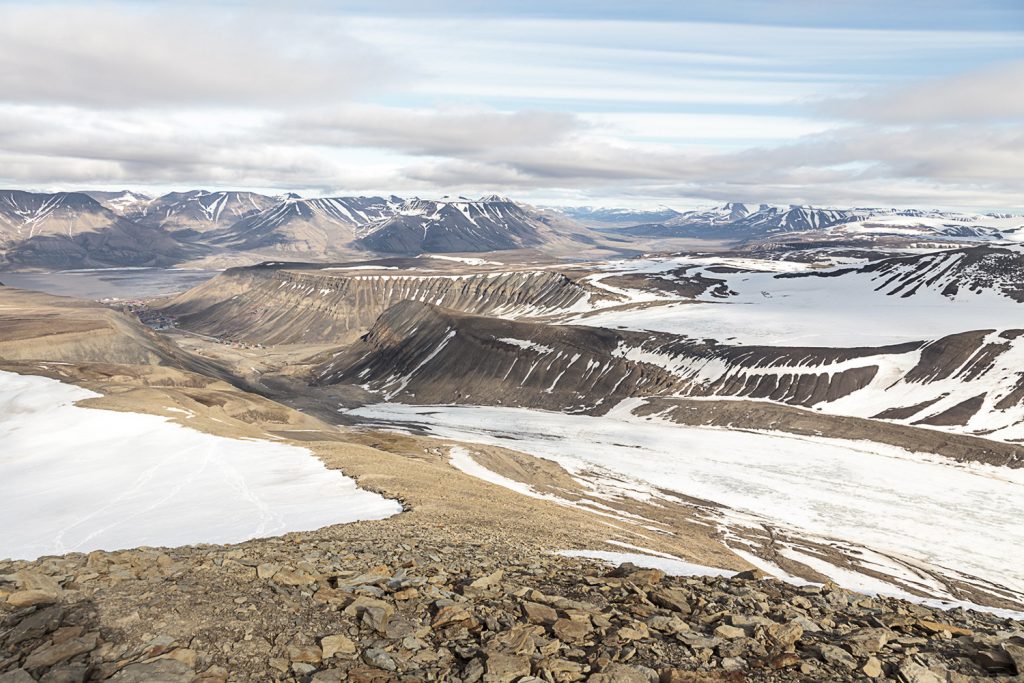Plant remains that were found under Longyearbreen about two kilometres behind the present-day glacier terminus turned out to be at least 1,100 years old, in part much older than that. Consequently, Longyearbreen or rather its precedessor must, for a long time, have been much smaller and had to grow by two thirds to assume its modern appearance! It is assumed that this development is actually quite typical for many other glaciers in the Arctic, including Greenland.

Then, Longyearbreen and other glaciers advanced markedly to reach its maximum position during the so-called Little Ice Age around 1850. At this point, many glaciers worldwide were larger than they had been for 10,000 years.

Since then, they have been shrinking due to the global warming that followed the Little Ice Age, a trend that has recently been increased by artificial greenhouse gas emissions into the atmosphere. Most glaciers have lost a lot of ice and have consequently become shorter. Due to the thick moraine cover at its lower terminus, Longyearbreen has almost kept its length, but has become up to 30 metres thinner over much of its area.
Longyearbreen, Svalbard, Norway
